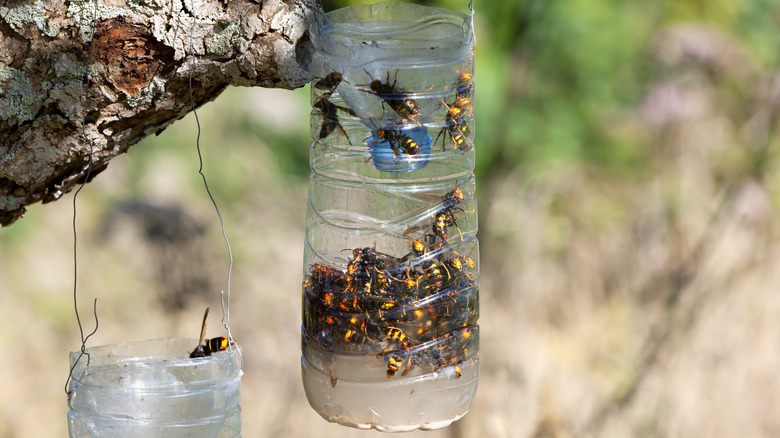Have you ever found yourself struggling to keep your living space free of unwanted pests? Whether it’s flies, cockroaches, or other common household nuisances, dealing with pests can be a persistent challenge.
The good news is that you don’t always need to resort to commercial products laden with chemicals. There are effective do-it-yourself (DIY) traps that you can create using common household items. This article will guide you through various methods to tackle some of the most common household pests.
Understanding Common Household Pests
Before delving into trap construction, it’s crucial to understand the behaviors and preferences of the pests you are targeting. Household pests, such as flies, cockroaches, ants, and rodents, often invade homes in search of food, water, and shelter.
Flies
Flies are nuisance creatures that can carry various diseases due to their feeding habits which often involve decaying matter. They are particularly attracted to food and sugary substances.
Cockroaches
Cockroaches are resilient pests that thrive in warm environments and can contaminate food, spread bacteria, and trigger allergies. They prefer dark, damp areas near food supplies.
Ants
Ants are social pests that invade in large numbers. They are attracted to sweet and greasy foods and can form extensive colonies within your home.
Rodents
Rodents, such as mice and rats, are not only destructive but also pose significant health risks. They chew through materials to nest and search for food, often leaving droppings and urine in their path.
Now that you have a better understanding of these pests, let’s dive into how you can manage them with effective DIY traps.
DIY Fly Traps
Flies are particularly attracted to food and decaying organic matter. Here are a few effective traps you can make at home:
Apple Cider Vinegar Trap
Apple cider vinegar attracts flies owing to its scent. This trap is simple to make and highly effective.
Materials Needed:
- A jar
- Apple cider vinegar
- Dish soap
- Plastic wrap
- A rubber band
Instructions:
- Fill the jar about halfway with apple cider vinegar.
- Add a few drops of dish soap to break the surface tension.
- Cover the jar with plastic wrap and secure it with a rubber band.
- Poke small holes in the plastic wrap.
Flies will be attracted to the vinegar, enter the jar through the holes, and become trapped in the liquid.
Sugar Water Trap
This trap uses sugar to attract flies and detergent to trap them.
Materials Needed:
- A soda bottle
- Sugar
- Water
- Dish soap
Instructions:
- Cut off the top third of the soda bottle.
- Fill the bottom part with a mixture of sugar, water, and a few drops of dish soap.
- Place the top portion of the bottle upside down into the bottom portion, creating a funnel effect.
Flies will be drawn to the sugar water, enter through the funnel, and eventually drown in the soapy water.

DIY Cockroach Traps
Cockroaches are drawn to food and water. Here are effective traps you can craft at home:
Baking Soda and Sugar Trap
The combination of baking soda and sugar works because the sugar attracts the cockroaches, and the baking soda disrupts their digestive systems.
Materials Needed:
- Baking soda
- Sugar
- A shallow dish
Instructions:
- Mix equal parts baking soda and sugar.
- Place the mixture in a shallow dish and leave it near areas where you’ve noticed cockroach activity.
Jar Trap
This simple but effective trap leverages cockroaches’ inability to climb smooth surfaces once they are inside.
Materials Needed:
- A glass jar
- Petroleum jelly
- A piece of bread soaked in beer or water
Instructions:
- Smear petroleum jelly on the inside rim of the jar.
- Place the soaked bread at the bottom of the jar.
- Position the jar in locations where cockroaches tend to frequent.
Cockroaches will climb into the jar for the bait but will not be able to escape due to the petroleum jelly.
DIY Ant Traps
To effectively manage ants, it’s important to target the workers who bring food back to their colony.
Borax and Sugar Trap
Borax is a natural substance that, when ingested, kills ants. Combined with sugar, it becomes an attractive bait.
Materials Needed:
- Borax
- Sugar
- Water
- Cotton balls
- Containers (bottle caps or shallow dishes)
Instructions:
- Mix 1 part borax with 3 parts sugar.
- Add enough water to create a syrupy consistency.
- Soak cotton balls in the mixture and place them in your chosen containers.
- Position the containers near ant trails or entry points.
The worker ants will carry the poisoned bait back to their colony, eventually killing the entire nest.
Vinegar and Water Spray
A spray can be used to deter ants and clean their scent trails.
Materials Needed:
- White vinegar
- Water
- A spray bottle
Instructions:
- Mix equal parts white vinegar and water in a spray bottle.
- Spray directly onto ants and their trails.
While this doesn’t trap ants, it is an effective deterrent and can be used in conjunction with bait traps.

DIY Rodent Traps
Rodents are trickier to manage due to their size and intelligence. Here are some effective traps:
Bucket Trap
This trap uses the rodent’s weight to trap it in a bucket.
Materials Needed:
- A large bucket
- A metal rod or dowel
- Peanut butter
- A plastic bottle
Instructions:
- Drill two holes near the top of the bucket on opposite sides.
- Insert the metal rod through the holes and the plastic bottle so that the bottle can spin freely.
- Smear peanut butter on the middle of the bottle.
- Place a ramp leading up to the edge of the bucket.
The rodent will be attracted to the peanut butter, try to reach it, and fall into the bucket as the bottle spins.
Snap Traps
Traditional snap traps are effective and can be enhanced by your baiting strategy.
Materials Needed:
- Standard mouse or rat snap traps
- Peanut butter, cheese, or bacon
Instructions:
- Bait the snap trap with a small amount of peanut butter, a piece of cheese, or bacon.
- Place traps along walls, behind appliances, or in other areas where rodent activity is noticed.
Ensure you check the traps regularly and dispose of any caught rodents in a sanitary manner.
Helpful Tables for Quick Reference
Materials Checklist for Common Traps
| Pest | Trap Type | Materials Needed |
|---|---|---|
| Flies | Apple Cider Vinegar | Jar, apple cider vinegar, dish soap, plastic wrap, rubber band |
| Flies | Sugar Water | Soda bottle, sugar, water, dish soap |
| Cockroaches | Baking Soda and Sugar | Baking soda, sugar, shallow dish |
| Cockroaches | Jar | Glass jar, petroleum jelly, bread soaked in beer or water |
| Ants | Borax and Sugar | Borax, sugar, water, cotton balls, containers |
| Ants | Vinegar Spray | White vinegar, water, spray bottle |
| Rodents | Bucket | Large bucket, metal rod, peanut butter, plastic bottle, ramp |
| Rodents | Snap Traps | Snap trap, peanut butter, cheese, bacon |
Homemade Pest Trap Efficiency
| Pest Type | Trap Effectiveness | Difficulty Level | Time to Prepare |
|---|---|---|---|
| Flies | Apple Cider Vinegar | High | Easy |
| Flies | Sugar Water | Medium | Easy |
| Cockroaches | Baking Soda and Sugar | High | Very Easy |
| Cockroaches | Jar | Medium | Easy |
| Ants | Borax and Sugar | High | Easy |
| Ants | Vinegar Spray | Medium | Very Easy |
| Rodents | Bucket | High | Moderate |
| Rodents | Snap Traps | High | Easy |
Safety Tips for Handling DIY Pest Traps
| Action | Safety Tip |
|---|---|
| Handling Chemicals | Always wear gloves when handling chemicals like borax and vinegar. |
| Disposal | Dispose of caught pests promptly to avoid contamination and bad odors. |
| Placement | Position traps away from children and pets to avoid accidental contact. |
| Checking Traps | Regularly inspect traps to ensure they are functioning and empty them as needed. |
Preventive Measures
While DIY traps are effective, combining them with preventive measures can keep your home even more pest-free.
Keep Your Home Clean
Pests are typically drawn to crumbs, spills, and garbage. Regularly clean surfaces, vacuum floors, and promptly empty trash bins to remove attractive food sources.
Seal Entry Points
Inspect your home for potential entry points and seal cracks, crevices, and gaps. Use weather stripping on doors and windows to deter pests from entering.
Proper Food Storage
Store food in airtight containers to prevent pests from accessing it. This includes not just pantry items but pet food as well.
Eliminate Standing Water
Standing water can attract pests like mosquitoes and cockroaches. Fix any leaks and use dehumidifiers in damp areas to reduce humidity.
Conclusion
DIY traps for common household pests provide an effective and economical solution to managing unwanted intruders. By understanding the behavior of pests such as flies, cockroaches, ants, and rodents, you can craft traps that are both efficient and environmentally friendly.
Your home can remain a sanctuary free of chemicals and pests with these simple, but effective strategies. Whether through the use of vinegar, sugar, baking soda, or traditional snap traps, you have the tools at your disposal to reclaim your living space from these persistent invaders. Implement these DIY traps today and enjoy a pest-free home.


